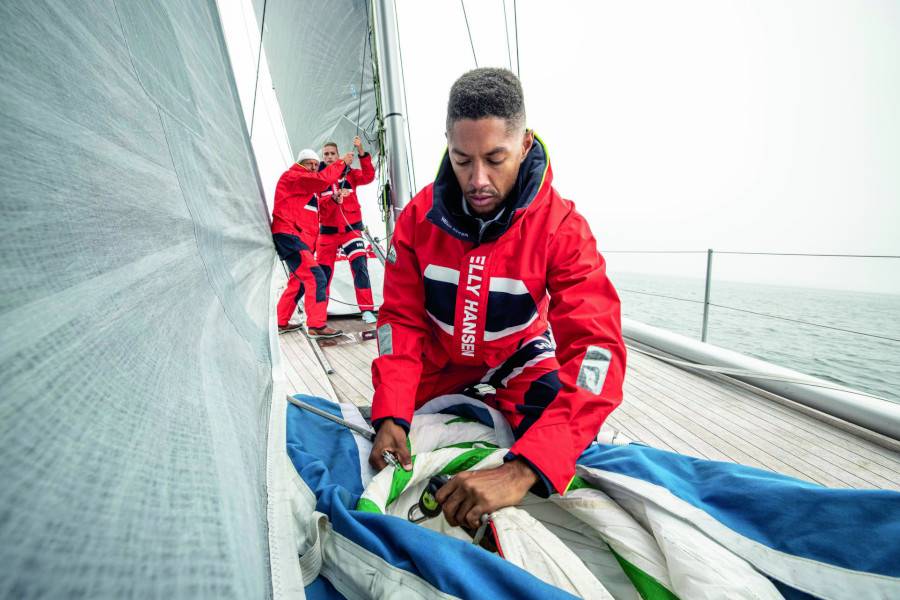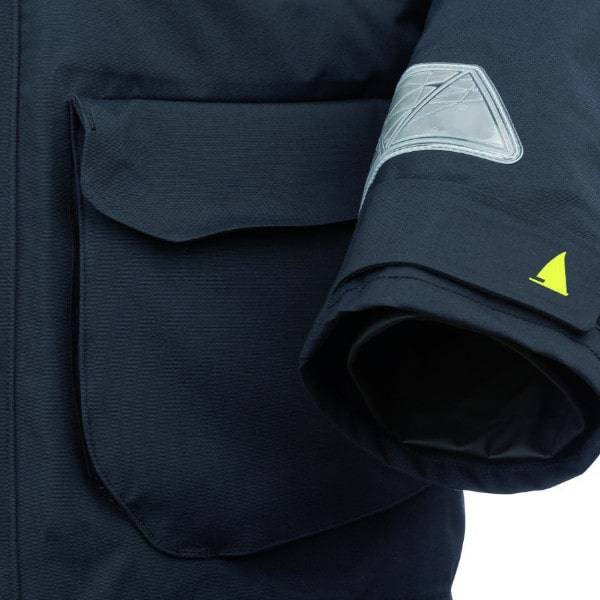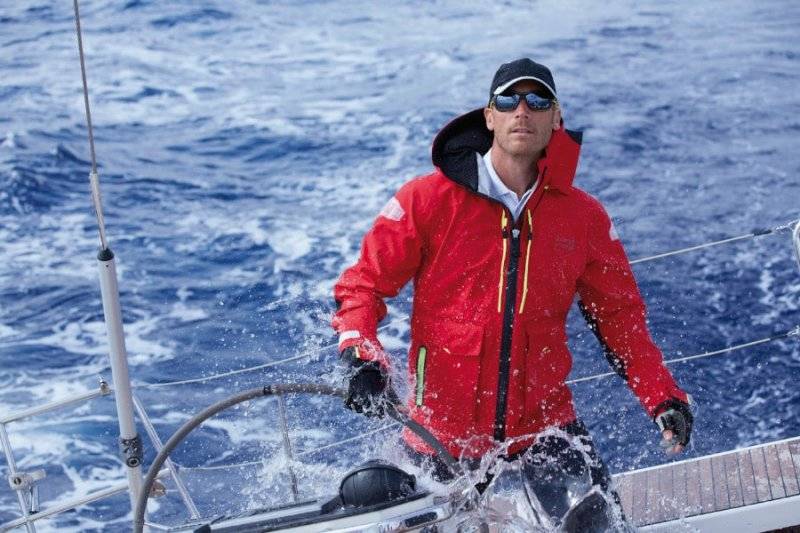OILSKIN: EVERYTHING YOU SHOULD KNOW ABOUT SAILING CLOTHING
The fascination of sailing consists of unique experiences at sea, friendships made and closeness to nature: being with others in close quarters for days on end, enduring sunny and stormy days, is welded together for life. However, you need appropriate clothing for the different weather conditions. Sailing clothing must not only be breathable and waterproof, but also resilient. Conventional functional clothing is not enough for this. Why the right layering system is important when sailing, what "oilskin" is and how to find the right sailing clothes, you can find out here.

Why is oilskin alone not enough?
Just wearing waterproof sailing clothes is not enough to get ready for the next sailing trip. Sailing clothes should always be waterproof and windproof. Unfortunately, there is no such thing as warm sailing clothing, which is why various items of clothing have to be combined. Although there are oilskins made of thicker or thinner material, this says nothing about the thermal performance. Often, the breathability of the clothing is the deciding factor in whether or not you will freeze while sailing. If moisture is transported away from the body well, no sailor has to freeze anymore.
Which sailing clothes do you need?
The choice of sailing clothes always depends on the conditions and places of use. First, you need to ask yourself the question of whether you need a complete sailing suit or just a sailing jacket or pants.
As a rule, a distinction is made between sailing clothes for coastal sailing (Coastal & Inshore), offshore sailing (Ocean & Offshore) and sailing for regattas (Racing). According to the type of sailing is also the appropriate sailing clothing.
Which sailing clothing is right for you depends on the following factors:
1) Base layer
The first layer of boat clothing should consist of functional underwear. This base layer is also known as a "baselayer" and is designed to wick sweat away from the body. Base layers are often made of synthetic fibres such as polyester. In cold temperatures, a warming base layer made from merino wool, for example, is recommended.
2) Middle layer
The middle layer provides breathability, sun protection and thermal insulation. Sailors also refer to the middle layer as the "mid-layer" or an insulating layer. It is designed to absorb moisture from the base layer and keep the body warm at the same time. Depending on the climate, the middle layer can consist of ajumper, T-shirt, long-sleeved shirt or a softshell or fleece jacket. On hot days, the middle layer can also function as an outer layer.
3) Outer layer
The last and third layer ("top layer") of sailing clothing consists of breathable oilskins. The outer layer not only serves to transport moisture, but also to protect against the weather. This is why the sailing clothing has taped seams and waterproof zips. This ensures ideal protection against the wet.
1) Freedom of movement
The fit and freedom of movement should be considered, because both too tight and too wide clothes can be a hindrance and interfere with the sailing trip. To check freedom of movement, you can simply bend your knees and turn your upper body as if operating a winch. By doing this, you will notice if you can perform all movements well or if you feel restricted by the clothing. After that, you can stand and stretch as much as possible. The sailing clothes should fit especially at the shoulders, knees and buttocks.
2) Adjustments
At the same time, the boat clothing should be customized to fit your body. Especially sailing pants can be adjusted in the waist area to your own waist circumference by straps or buckles. When trying on, you should check whether the clothing can be put on and adjusted independently. In sailing jackets, the hem can usually be adjusted with an elastic band to protect against water and wind. The legs and arms of the sailing clothes should be able to be tightened with a strap or velcro.


3) Collar size
The collar should be as tight as possible to protect from moisture, wind and cold. However, the collar should still be comfortable and not constricting. At best, when trying on, test the fit with the hood stowed and with the hood up. With the hood up, you should still be able to move your head easily and see everything.
4) Jacket pockets
The importance of extras such as pockets in the sailing jacket should not be underestimated. These are not only suitable as storage space for handkerchiefs, for example, but also warm the hands on cold days at sea. There are even sailing jackets with specially lined pockets for this purpose. However, these should always be tight or have drainage when sailing.


What is the best way to care for oilskins and sailing clothes?
Before washing, you should pay attention to the sewn-in care instructions of the manufacturer and remove coarse dirt under running water. In addition, you should close all zippers and Velcro fasteners and remove the hood from the collar. For sailing clothes, a wash cycle for easy-care textiles at 40 degrees Celsius with as little detergent as possible is suitable.
You should avoid these when caring for your oilskins:
Frequently asked questions - FAQs
What is oilskin?
Oilskins are waterproof protective clothing for seafarers. Oilskins are available for both men and women.
Why are oilskins called oilskins?
This sailing clothing was originally made from a linen fabric and the surface was impregnated with linseed oil.
What do you wear under oilskins?
Functional underwear, T-shirts, jumpers or fleece and softshell jackets are worn under oilskins.














